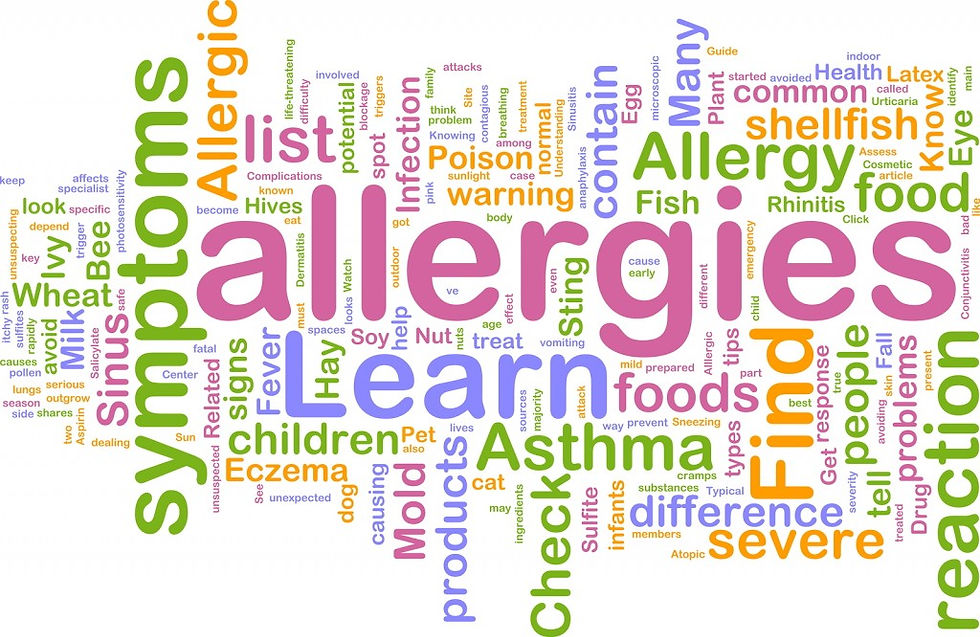Allergic reaction Servsafe Westchester County
- Frank Madaio

- Jul 27, 2019
- 2 min read

An allergic reaction to food can be fatal, and today food allergies are extremely common. More than 12 million people in the U.S. have food allergies. That's one out of every twenty-five people, or 4 percent of the population.
It's clear that every operation, manager, and food handler must know about food allergens. Here are the basics that everyone needs to understand today.
What is a food allergy?
A food allergy is the body's negative reaction to a particular food protein. A person's immune system incorrectly identifies this protein as a threat to the body. Chemicals are released into the blood to try to protect against this perceived threat to the body. This results in the symptoms of an allergic reaction.
What are the common food allergens?
The most common allergens are:
· Milk and dairy products
· Eggs and egg products
· Fish and shellfish
· Wheat
· Soy and soy products
Peanuts and tree nuts, such as almonds, cashews and walnuts The aforementioned foods account for 90 percent of all food-allergic reactions in the United States. Managers should discuss allergens with all employees and thoroughly evaluate which menu items contain these ingredients.
How can staff help prevent the possibility of an allergic reaction?
When a food-allergic guest orders a menu item, servers should be able to describe the dish and identify all its ingredients, including the ingredients of any sauce, marinade or garnish. If a server doesn't know the answer to a question about ingredients, he or she should contact the manager. Servers also should be prepared to suggest alternate menu items that would be safe for the guest.
Back-of-the-house employees must ensure that allergens are not transferred from one food to another through cross-contact. For example, placing chocolate brownies on the same parchment paper that was used for peanut butter cookies can transfer some of the peanut allergen. Similarly, shrimp allergens could be transferred to chicken that is cooked in the same fryer oil as shrimp. These scenarios can be avoided by properly cleaning and sanitizing kitchen equipment and by designating specific equipment for specific types of food.
What are the symptoms of an allergic reaction?
Symptoms include:
· Itching or tingling sensation in the mouth, face or scalp
· Tightening in the throat
· Wheezing or shortness of breath
· Hives
· Swelling of the face, eyes or hands
· Abdominal cramps
· Vomiting
· Diarrhea
· Loss of consciousness
Any of these symptoms could be an indication of an allergic reaction to food. Some people will have an allergic reaction right after eating the food. Other people may not have a reaction for several hours. An allergic reaction is a medical emergency that requires immediate action.
What should staff do if a guest is having an allergic reaction?
Immediately call 911 or the emergency number in your area. All employees should keep in mind that an allergic reaction can be fatal. Therefore, one employee should stay with the guest until medical assistance arrives.
Every operator, of course, strives to reduce the likelihood of a medical emergency. A prevention plan that's tailored to the operation's unique needs can help keep every guest safe during every meal.
westchesterfoodsafety.com



.png)

Comments